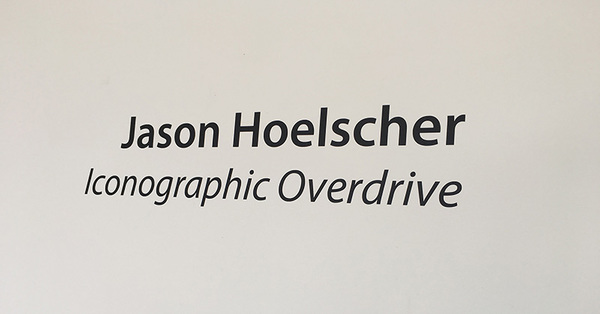Attention Span Management
My paintings explore the role of attention in a contemporary context. Artworks both demand and reward attention, but what counts as attention shifts over the years: What seemed like a fast glance twenty years ago—not to mention a century ago—seems quite lingering and focused compared to today’s hyperspeed intake. This is not only an issue of shortening attention spans, however, but also of the increased visual intake speeds that accompany immersion in a media-saturated information ecology. It is in the zone where contemporary viewers’ ever-attenuating attention spans meet ever-accelerating information intake speeds that my paintings operate.
With these ideas in mind, my paintings repurpose and combine the immersive all-at-onceness sought by late modernist abstraction with the kinds of visually gripping, quick-read semiotics found in contemporary logo design and the screenspaces of meme culture. Because art’s ever-changing understanding of space is a key interest as well, my paintings operate within a composite space that fuses pictorial flatness with a quasi-architectural depth that is neither a Renaissance window to look through nor a modernist surface to look at, but rather a hybrid of both. My goal with these paintings, accordingly, is to offer enough in-your-face aesthetic oomph and visual terseness to reward a viewer’s fast glance, but with enough richness, surface tension, and layered complexity to engage and reward a viewer who chooses to linger and look.
My paintings explore the role of attention in a contemporary context. Artworks both demand and reward attention, but what counts as attention shifts over the years: What seemed like a fast glance twenty years ago—not to mention a century ago—seems quite lingering and focused compared to today’s hyperspeed intake. This is not only an issue of shortening attention spans, however, but also of the increased visual intake speeds that accompany immersion in a media-saturated information ecology. It is in the zone where contemporary viewers’ ever-attenuating attention spans meet ever-accelerating information intake speeds that my paintings operate.
With these ideas in mind, my paintings repurpose and combine the immersive all-at-onceness sought by late modernist abstraction with the kinds of visually gripping, quick-read semiotics found in contemporary logo design and the screenspaces of meme culture. Because art’s ever-changing understanding of space is a key interest as well, my paintings operate within a composite space that fuses pictorial flatness with a quasi-architectural depth that is neither a Renaissance window to look through nor a modernist surface to look at, but rather a hybrid of both. My goal with these paintings, accordingly, is to offer enough in-your-face aesthetic oomph and visual terseness to reward a viewer’s fast glance, but with enough richness, surface tension, and layered complexity to engage and reward a viewer who chooses to linger and look.
Site contents copyright 2024 by Jason Hoelscher. All rights reserved.
